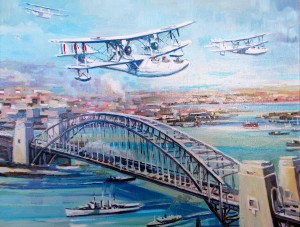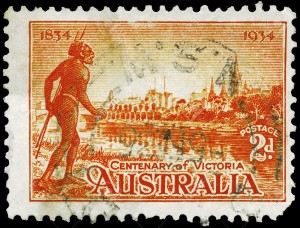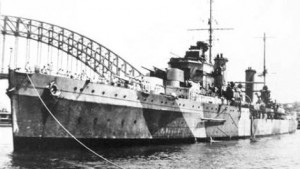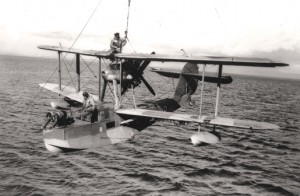Dear reader, recent events in Fremantle would have you believe that Australia Day is only now considered by some to be a day shrouded in controversy. The naming of a day in honour of the vanquishment of a people, their culture and traditions is a strange way of celebrating a nation’s identity. But way back in 1934, no such qualms existed. Australia day was all about “Civilising”, and for the mother country the recognition that ne’r do wells had made good. No such recognition for ne’r do wells these days, they’re part of a business plan that sees them imprisoned for being native in the north, and just imprisoned for arriving from the North. So please enjoy this fragment of a simpler time, when the “crimson thead of kinship” united us all in a bond of decency and fair play.
Southampton’s over Sydney, 23 Feb, 1934 Oil on Canvas.

1934 centenary. All guests to the Governor’s ball had to arrive naked and supply their own billiard cues.
This painting was painstakingly reconstructed from a photograph (now missing) which records the historic flight of No 2 squadron RAAF, over the Sydney harbour bridge. The flyover, organised in great haste by the RAAF was initiated as a compensatory gesture by the RAAF from the disquiet felt by Sydney-siders and the Steven’s Government that Melbourne, then in the throes of the 1934 Centennial celebrations and the Macrobertson Air Race was getting all the glory.
Such was the level of disquiet and festering interstate rivalry, the Colonial secretary, then aptly named ‘The Secretary to the Dominions and White Empire’ telegrammed Whitehall, suggesting a flag waving excercise. It was determined the ‘Australia Day’ would be a perfect opportunity to demonstrate the kinship between New South Wales and the mother country with a flyover and leaflet drop. Leaflets proudly displaying the Union Jack, a map of the globe, (one fifth in crimson) and the outstretched hand of Britannia, were to be dropped above the people of Sydney. Among the several hundred thousand were several leaflets signed by their majesty’s King George V1 and Queen Mary.
With incredible speed a squadron of then brand new Supermarine Southampton’s were despatched via the empire route to Marseille, Cairo, Aden, Bombay, Singapore, a short diversion to Hong Kong, then by parabolic astral compass to Rangoon, then to Trincomalee and via the Cocos Islands to Darwin. Then, to demonstrate the amphibious capability of the upgraded Southampton, the aircraft, “Sydney, Surrey and Southampton”, then taxied down the then unfinished stretch of the Stuart Highway to Alice Springs. From Alice Springs, the planes readied themselves for the long haul flight to Sydney. Due to a bush fire outbreak outside Daly Waters the planes were delayed, ferrying water to outlying stations and finally made it to Sydney on the 23rd Feb, some four weeks after the official Australia day celebrations.
In spite of the delay, the population of Sydney turned out en masse to witness the superb flying boats arrival and waited breathlessly for them to circle the bridge and the land under the arch. To add weight to the auspicious occassion, the Amphion Class cruiser HMAS Sydney was anchored in readiness with its Walrus aircraft circling overhead. The leader of the squadron Flight Lieutenant Sydney Harbourson DSO. MC, V.C and bar, was selected as he was both Australian born, educated in the mother country and represented the apotheosis of Empire, being both a member of the Harelquins and opening batsman for Lord Rothermere’s first eleven. With due precision the Southampton’s prepared to land. Before landing the leaflets were “let go’ and the crowd “ooed” in fascination as the mighty planes descended upon the crystalline waters of the harbour. With a roar of the Perseus inline twelves and a splash they caressed the still waters with a perfect line of spray and foam, before coming to a complete stop. And as the engines faded, they gently, one by one, sank.
The board of enquiry revealed that the hulls had sustained termite damage on their journey across the top end. The hulls were irretrievably riddled with borer, and in the words of the enquiry, ‘were no more than an intricate sieve”. The leaflets, when they fell to ground, were discovered to be ads for Indian Root Pills and Dr Morse’s Pile Ointment. An inadvertent mix up between the Crown Office and requisitions made to the Indian Army being the ‘root cause’ of the problem. In the end, Sydney-siders went home happy, for amongst the throng some had gathered those leaflets signed by the King and Queen. And quietly in little outhouses across the suburbs they were put to ‘royal’ good use.


